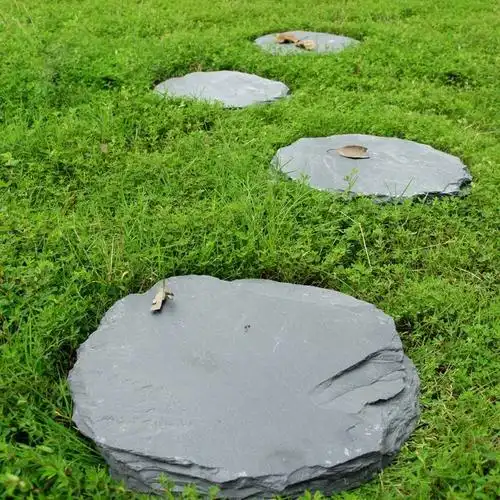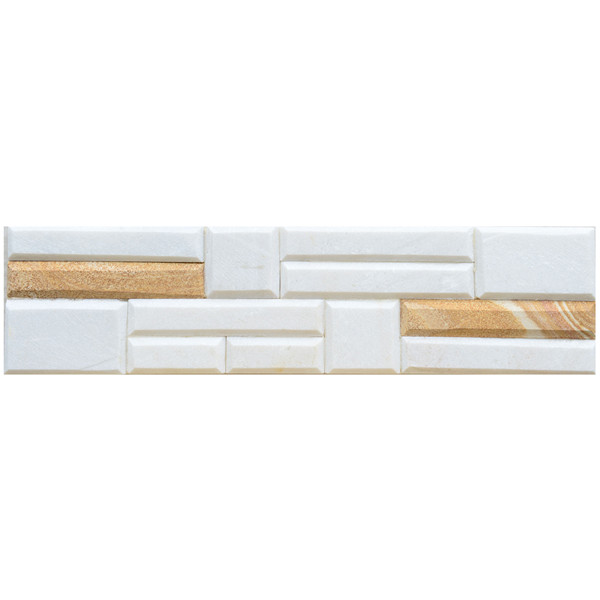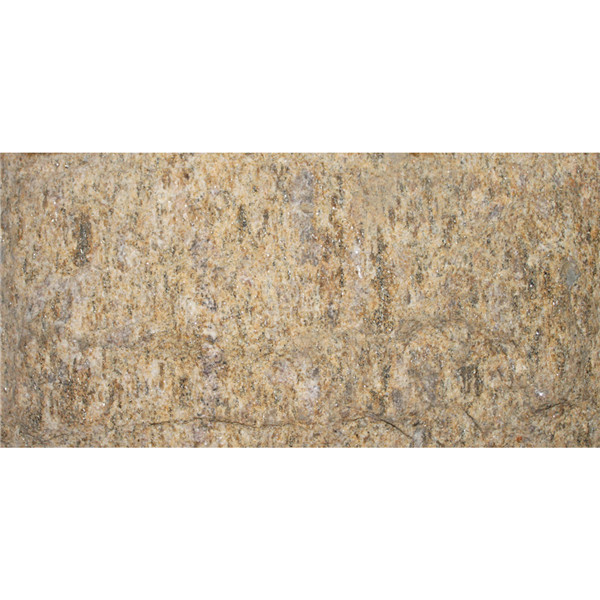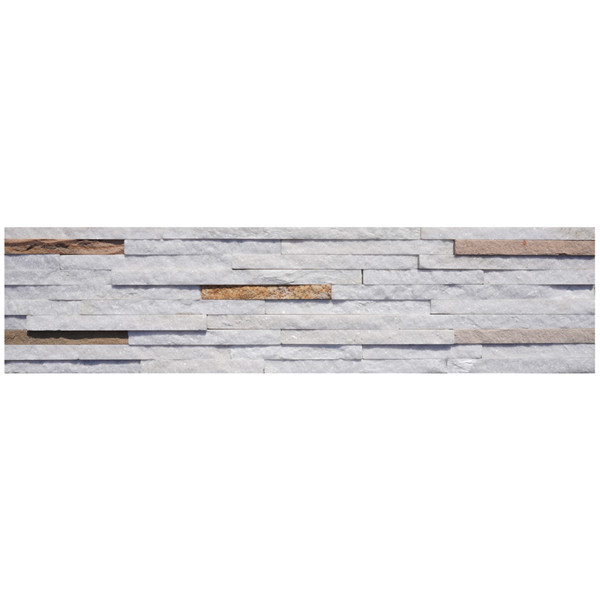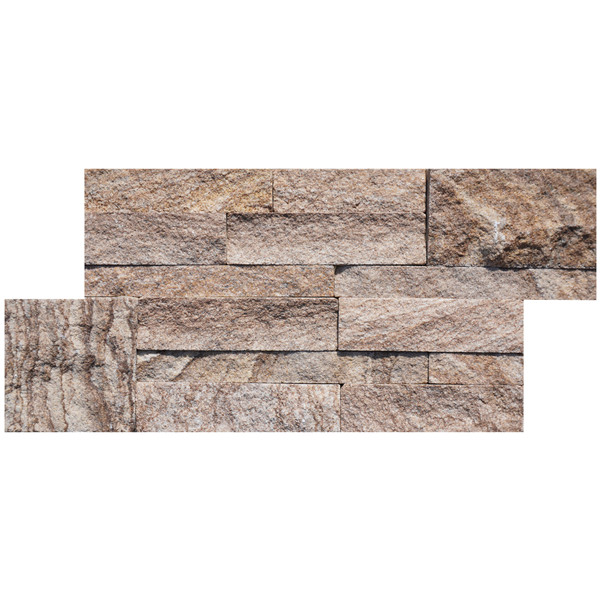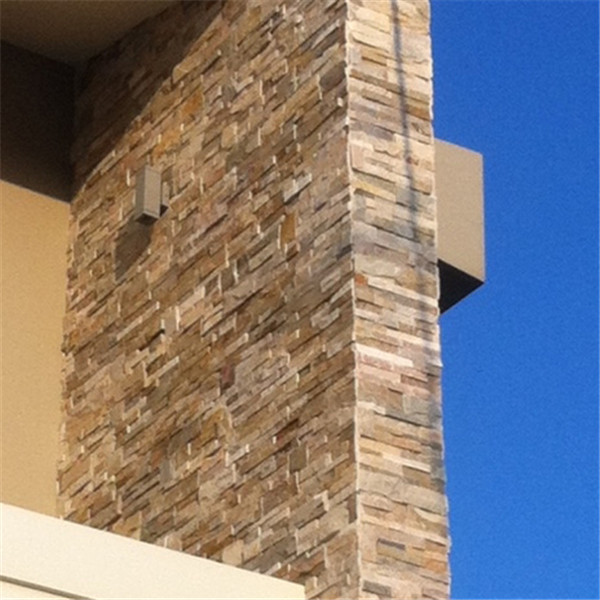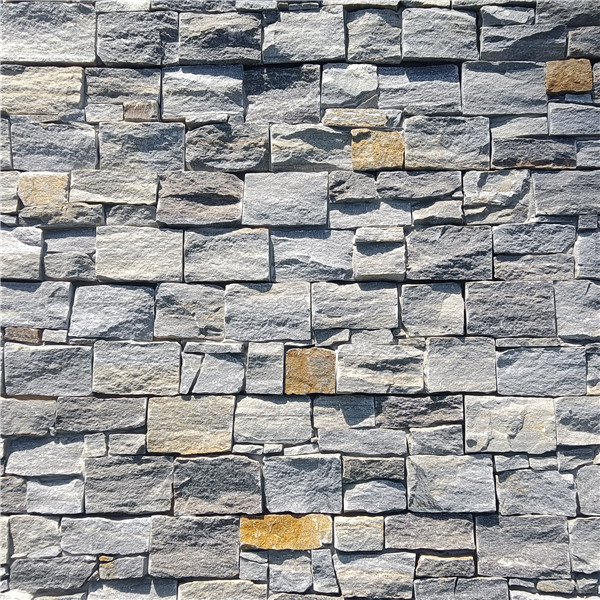Table of Contents
Toggle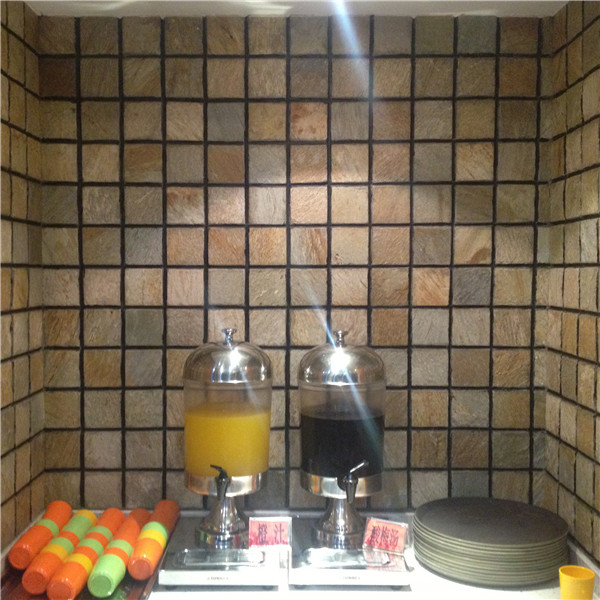
Mosaic tiles have been captivating designers and homeowners alike with their intricate beauty and versatility for centuries. These diminutive tiles, when assembled, create stunning visuals that can instantly elevate the aesthetic appeal of any space. Whether you’re seeking to infuse your kitchen backsplash with a vibrant pop of color, add a touch of elegance to your bathroom, or create a mesmerizing focal point in your living area, mosaic tiles offer an array of possibilities.
In this comprehensive guide, we’ll delve into the enchanting realm of mosaic tiles, exploring their rich history, the diverse materials and shapes available, and the myriad of design options they offer. We’ll also provide you with invaluable insights to help you choose the perfect mosaic tiles for your specific project, ensuring that your space exudes the desired ambiance and reflects your unique style.
Mosaic Tiles: A Journey Through Time
Mosaic tiles have been an integral part of human artistry and architectural expression for millennia. Tracing their origins back to ancient Egypt, these intricate tile designs were initially crafted from meticulously hand-cut pieces of glass, stone, or ceramic, expertly assembled to create intricate patterns and captivating imagery.
Over the centuries, the art of mosaic tile creation spread across Asia and Europe, adorning iconic landmarks such as St. Mark’s Basilica in Venice, Italy. Today, mosaic tiles continue to captivate designers and homeowners alike, offering a timeless elegance that seamlessly blends with contemporary and traditional aesthetics.
Unveiling the Allure: Materials and Shapes
Mosaic tiles are available in a myriad of materials, each with its own unique characteristics and allure. From natural stone mosaics that exude an earthy, organic charm to sleek and lustrous glass mosaics that reflect light in mesmerizing ways, the options are truly boundless.
- Natural Stone Mosaics: Crafted from materials like marble, slate, and travertine, natural stone mosaics offer a timeless appeal and a sense of organic warmth. These tiles are perfect for creating a rustic, yet sophisticated ambiance in your living spaces.
- Glass Mosaics: Renowned for their vibrant colors and luminous sheen, glass mosaics are a versatile choice that can transform any space into a captivating work of art. Whether you prefer opaque, translucent, or mirrored finishes, glass mosaics offer a vast array of possibilities.
- Ceramic and Porcelain Mosaics: Renowned for their durability and resistance to moisture, ceramic and porcelain mosaics are ideal for high-traffic areas like bathrooms and kitchens. With their wide range of colors and patterns, these tiles can seamlessly blend with any design aesthetic.
- Metal Mosaics: For those seeking a sleek and contemporary look, metal mosaics offer a unique blend of sophistication and modernity. These tiles are not only visually striking but also highly resistant to stains and moisture, making them a practical choice for various applications.
In addition to the diverse materials available, mosaic tiles come in a plethora of shapes, from classic squares and rectangles to intricate patterns and designs. Whether you prefer the timeless elegance of hexagons or the whimsical charm of floral motifs, the possibilities are endless.
Choosing the Perfect Mosaic Tiles: Factors to Consider
With such a vast array of options available, selecting the ideal mosaic tiles for your project can be a daunting task. To ensure that you make an informed decision, consider the following factors:
- Application: The intended use of the mosaic tiles will play a crucial role in determining the most suitable material and design. For instance, tiles used in showers or swimming pools should prioritize water resistance and durability, while tiles for decorative accents can focus more on aesthetics.
- Durability and Maintenance: High-traffic areas demand tiles that are scratch-resistant, easy to clean, and resistant to stains and fading. Consider the level of maintenance required for each material, as some may necessitate special cleaning agents or sealing treatments.
- Size and Shape: Mosaic tiles come in a wide range of sizes and shapes, from small squares and rectangles to intricate patterns and designs. Consider the scale of your project and the visual impact you wish to achieve when selecting the appropriate size and shape.
- Color and Texture: One of the most exciting aspects of choosing mosaic tiles is the ability to explore a vast array of colors and textures. Consider the overall color scheme of the space and whether you want the tiles to blend seamlessly or make a bold statement.
- Transparency and Reflectivity: Glass tiles have a unique ability to reflect light and create dynamic, luminous effects. Consider the desired level of transparency and reflectivity when making your selection, as transparent tiles can create a sense of depth and brightness, while opaque tiles offer a more subdued, reflective surface.
- Installation Method: Some mosaic tiles come pre-mounted on mesh sheets or adhesive backing, simplifying the installation process. Others may require individual placement and grouting, offering greater flexibility in design but potentially requiring more time and expertise.
- Budget Considerations: Mosaic tile prices can vary widely depending on factors such as material, size, and design complexity. Set a realistic budget early on and prioritize the features that are most important to you, whether it’s durability, aesthetics, or ease of installation.
By carefully considering these factors, you can confidently choose mosaic tiles that not only elevate the aesthetic appeal of your space but also meet your functional requirements and align with your personal style.
Embracing Versatility: Mosaic Tile Applications
One of the most captivating aspects of mosaic tiles is their versatility. These intricate tiles can be seamlessly integrated into various areas of your home, adding depth, texture, and visual interest to every space they adorn.
- Kitchen Backsplashes: Mosaic tiles have long been a popular choice for kitchen backsplashes, offering a perfect canvas for showcasing intricate patterns and vibrant colors. Whether you opt for a sleek and modern glass mosaic or a rustic natural stone design, a mosaic backsplash can instantly elevate the ambiance of your cooking space.
- Bathroom Surrounds: The inherent water resistance and durability of certain mosaic tile materials, such as glass and porcelain, make them ideal for bathroom surrounds. Incorporate mosaic tiles around your shower or bathtub for a luxurious and spa-like atmosphere.
- Fireplace Surrounds: While often overlooked, mosaic tiles can create a stunning focal point around your fireplace. The combination of flickering flames and the intricate patterns of mosaic tiles can create a mesmerizing and cozy ambiance in your living room.
- Accent Walls: Transform a drab wall into a captivating work of art by incorporating mosaic tiles. Whether you opt for a full accent wall or a strategically placed panel, mosaic tiles can add depth, texture, and visual interest to any space.
- Outdoor Spaces: Many mosaic tile materials are rated for both indoor and outdoor use, making them perfect for enhancing your outdoor living areas. Incorporate mosaic tiles into your patio, pool surrounds, or outdoor kitchen for a touch of elegance and durability.
- Decorative Accents: Think beyond the traditional applications and incorporate mosaic tiles into decorative accents throughout your home. Frame your favorite artwork with mosaic tile borders, create a stunning tabletop or countertop inlay, or even incorporate them into your furniture designs for a truly unique touch.
The versatility of mosaic tiles knows no bounds, and with a little creativity, you can transform any space into a captivating work of art that reflects your personal style and design aesthetic.
Mastering the Art of Color and Pattern
Choosing the right color and pattern for your mosaic tile installation is akin to creating a masterpiece. With a vast array of hues and designs at your disposal, the possibilities are truly endless.
- Embracing Bold and Vibrant Colors: If you’re seeking to make a statement, consider incorporating bold and vibrant colors into your mosaic tile design. Jewel tones, rich reds, and vibrant blues can add depth and drama to any space, creating a captivating focal point that demands attention.
- Soothing Neutrals and Pastels: For a more understated and serene ambiance, opt for neutral tones or soft pastels. These calming hues can create a tranquil oasis within your home, providing a soothing backdrop for your daily activities.
- Monochromatic Elegance: Embrace the timeless elegance of a monochromatic color scheme by selecting mosaic tiles in varying shades of a single hue. This approach can create a cohesive and sophisticated look while still allowing for subtle variations in texture and pattern.
- Geometric and Abstract Patterns: Mosaic tiles lend themselves beautifully to intricate patterns and designs. Geometric patterns can add a modern, contemporary flair to your space, while abstract designs can evoke a sense of whimsy and creativity.
- Nature-Inspired Motifs: For those seeking to bring the beauty of the outdoors inside, consider mosaic tiles with nature-inspired motifs. Floral designs, leaf patterns, and serene landscapes can create a calming and rejuvenating atmosphere within your home.
Regardless of your color and pattern preferences, the key to a successful mosaic tile installation lies in thoughtful planning and attention to detail. Experiment with different combinations, create mood boards, and seek inspiration from various sources to ensure that your final design truly reflects your personal style and vision.
Enhancing Functionality: Durability and Maintenance Considerations
While the aesthetic appeal of mosaic tiles is undeniable, it’s essential to consider their durability and maintenance requirements to ensure a long-lasting and functional installation.
- Water Resistance: For areas prone to moisture, such as bathrooms and outdoor spaces, it’s crucial to choose mosaic tiles that are water-resistant. Glass, porcelain, and certain natural stone tiles are excellent choices for these applications, as they are less susceptible to water damage and staining.
- Scratch and Wear Resistance: High-traffic areas demand tiles that can withstand daily wear and tear. Look for mosaic tiles made from materials like porcelain or vitrified glass, which are known for their exceptional scratch and wear resistance.
- Slip Resistance: Safety should be a top priority, especially in areas prone to moisture or high foot traffic. Consider incorporating mosaic tiles with textured or honed surfaces to enhance slip resistance and prevent accidents.
- Ease of Cleaning: Mosaic tiles with smooth, non-porous surfaces are generally easier to clean and maintain. Glass and porcelain tiles are excellent choices in this regard, as they resist staining and can be easily wiped clean with mild cleaning solutions.
- Sealing and Maintenance: Some mosaic tile materials, such as natural stone, may require periodic sealing to protect against stains and moisture damage. Be sure to follow the manufacturer’s recommendations for proper sealing and maintenance to ensure the longevity of your installation.
By carefully considering the durability and maintenance requirements of your chosen mosaic tiles, you can create a beautiful and functional space that stands the test of time while maintaining its stunning visual appeal.
Embracing Sustainability: Eco-Friendly Mosaic Tile Options
In today’s environmentally conscious world, it’s essential to consider the ecological impact of our design choices. Fortunately, the world of mosaic tiles offers a variety of eco-friendly options that allow you to create stunning spaces while minimizing your environmental footprint.
- Recycled Glass Mosaics: Recycled glass mosaics are an excellent choice for those seeking a sustainable and eco-friendly option. These tiles are crafted from repurposed glass, reducing waste and minimizing the need for new raw materials.
- Natural Stone Mosaics: Sourced from the earth, natural stone mosaics are a timeless and eco-friendly choice. These tiles are extracted and processed with minimal environmental impact, making them a responsible choice for your design projects.
- Ceramic and Porcelain Mosaics: Many manufacturers now offer ceramic and porcelain mosaic tiles that are made from recycled materials or produced using environmentally friendly processes, reducing their overall carbon footprint.
- Locally Sourced Materials: Consider sourcing mosaic tiles from local manufacturers or suppliers to minimize the environmental impact of transportation and support your local economy.
- Sustainable Installation Practices: In addition to choosing eco-friendly mosaic tiles, it’s essential to adopt sustainable installation practices. This may include using low-VOC adhesives, minimizing waste, and properly disposing of any leftover materials.
By embracing eco-friendly mosaic tile options and sustainable installation practices, you can create beautiful and captivating spaces while contributing to a healthier planet for generations to come.
Mastering the Art of Installation: Tips and Techniques
While mosaic tiles offer a wealth of design possibilities, their installation can be a delicate and intricate process. To ensure a flawless and long-lasting installation, it’s essential to follow proper techniques and best practices.
- Surface Preparation: Proper surface preparation is crucial for a successful mosaic tile installation. Ensure that the surface is clean, dry, and free from any contaminants that could compromise the adhesion of the tiles.
- Layout and Planning: Before beginning the installation process, take the time to plan and layout your design. This will help you visualize the final result and identify any potential issues or challenges that may arise.
- Adhesive Selection and Application: Choose an appropriate adhesive for your mosaic tile material and application. Follow the manufacturer’s instructions carefully for proper mixing, application, and curing times.
- Tile Placement and Grouting: When placing the mosaic tiles, pay close attention to the spacing and alignment to ensure a consistent and visually appealing result. Once the tiles are in place, allow the adhesive to cure properly before proceeding with grouting.
- Grouting Techniques: Grouting is an essential step in the mosaic tile installation process, as it not only fills the spaces between the tiles but also enhances the overall visual appeal. Follow the manufacturer’s instructions for mixing and applying the grout, and be sure to clean any excess grout from the tile surfaces promptly.
- Sealing and Maintenance: Depending on the mosaic tile material and application, sealing may be necessary to protect the tiles from stains, moisture, and other potential damage. Follow the manufacturer’s recommendations for proper sealing and maintenance procedures.
By mastering the art of mosaic tile installation, you can ensure that your design vision is brought to life with precision and longevity, creating a space that truly reflects your personal style and aesthetic preferences.
Embracing Creativity: Unique Mosaic Tile Design Ideas
While mosaic tiles offer a wealth of traditional design options, their true beauty lies in their ability to inspire creativity and push the boundaries of conventional design. Embrace your inner artist and explore unique mosaic tile design ideas that will transform your space into a captivating work of art.
- Mosaic Tile Murals: Unleash your artistic side by creating stunning mosaic tile murals that depict landscapes, abstract patterns, or even personal narratives. These intricate installations can serve as breathtaking focal points in your living spaces.
- Mixed Media Installations: Combine mosaic tiles with other materials, such as wood, metal, or textiles, to create unique and multidimensional installations that blend various textures and elements.
- Mosaic Tile Furniture: Elevate ordinary furniture pieces by incorporating mosaic tiles into their design. From tabletops and countertops to chairs and benches, mosaic tiles can add a touch of whimsy and individuality to your furnishings.
- Outdoor Mosaic Tile Art: Extend the beauty of mosaic tiles beyond the confines of your home by creating outdoor installations, such as mosaic tile pathways, water features, or garden art pieces.
- Personalized Mosaic Tile Designs: Collaborate with local artists or mosaic tile artisans to create personalized designs that reflect your unique style and preferences. These one-of-a-kind installations will undoubtedly become conversation starters and cherished focal points in your home.
By embracing your creativity and exploring unique mosaic tile design ideas, you can transform your living spaces into truly extraordinary and captivating environments that reflect your individuality and artistic expression.
Budgeting and Planning: Maximizing Your Mosaic Tile Investment
While mosaic tiles offer a wealth of design possibilities, it’s essential to approach your project with a well-planned budget and a strategic approach to maximize your investment.
- Set a Realistic Budget: Before embarking on your mosaic tile project, establish a realistic budget that takes into account not only the cost of the tiles themselves but also any additional materials, installation costs, and potential maintenance expenses.
- Prioritize Key Areas: If your budget is limited, consider focusing your mosaic tile installation on key areas or focal points within your space. This will allow you to create a stunning visual impact while staying within your financial constraints.
- Explore Cost-Effective Options: Mosaic tiles are available in a wide range of materials and price points. Consider exploring cost-effective options, such as ceramic or porcelain tiles, which can offer a similar aesthetic appeal at a more affordable price point.
- Here is the article continued from where it left off:
- Incorporate Accent Pieces: If a full mosaic tile installation is beyond your budget, consider incorporating accent pieces or borders to add a touch of elegance and visual interest to your space. These smaller-scale applications can be both cost-effective and visually striking.
- Explore Tile Remnants and Surplus: Many tile suppliers and manufacturers offer discounts on tile remnants or surplus materials, which can be an excellent way to save money while still achieving your desired design aesthetic.
- Consider DIY Installation: If you possess the necessary skills and expertise, consider tackling the mosaic tile installation yourself. This can significantly reduce labor costs, but it’s essential to carefully weigh the potential risks and challenges associated with DIY projects.
- Plan for Future Maintenance: When budgeting for your mosaic tile project, be sure to factor in the potential costs of future maintenance and repairs. This will help ensure that your investment remains beautiful and functional for years to come.
By carefully planning and budgeting for your mosaic tile project, you can create a stunning and captivating space without breaking the bank. Remember, a well-executed mosaic tile installation is an investment that can add value and beauty to your home for years to come.
Embracing Versatility: Mosaic Tiles for Indoor and Outdoor Spaces
One of the most compelling aspects of mosaic tiles is their ability to seamlessly transition between indoor and outdoor spaces, creating a cohesive and harmonious design aesthetic throughout your home.
- Indoor Applications: From kitchen backsplashes and bathroom surrounds to fireplace accents and accent walls, mosaic tiles can elevate the visual appeal of any indoor space. Their versatility allows you to incorporate them into both traditional and contemporary design schemes, creating a unique and personalized ambiance.
- Outdoor Oases: Mosaic tiles are not limited to indoor applications. Many tile materials, such as glass and porcelain, are designed to withstand the elements and can be used to create stunning outdoor living spaces. Imagine a mosaic tile patio adorned with intricate patterns or a pool surrounded by a captivating mosaic tile border.
- Transitional Spaces: Embrace the fluidity of mosaic tiles by incorporating them into transitional spaces, such as entryways, sunrooms, or covered patios. These areas serve as a bridge between indoor and outdoor living, and mosaic tiles can help create a seamless visual flow between the two environments.
- Outdoor Accents: If a full outdoor mosaic tile installation is not feasible, consider incorporating mosaic tile accents or decorative elements into your outdoor spaces. These can include mosaic tile planters, water features, or even outdoor furniture embellishments.
- Cohesive Design: By using mosaic tiles in both indoor and outdoor spaces, you can create a cohesive and harmonious design aesthetic throughout your home. This can be achieved by using the same tile materials and colors or by incorporating complementary patterns and textures that tie the spaces together visually.
Embracing the versatility of mosaic tiles for both indoor and outdoor applications allows you to create a seamless and visually stunning environment that blurs the boundaries between interior and exterior spaces, creating a truly immersive and captivating living experience.
Mosaic Tiles and Lighting: Enhancing Visual Impact
The interplay between mosaic tiles and lighting can create a truly mesmerizing and captivating visual experience. By carefully considering the relationship between these two elements, you can elevate the aesthetic appeal of your space and create a dynamic and ever-changing ambiance.
- Natural Light: Embrace the beauty of natural light by strategically placing mosaic tile installations in areas that receive ample sunlight. The interplay between the tiles and the ever-changing angles and intensities of natural light can create a stunning and dynamic visual effect.
- Artificial Lighting: Incorporate strategic lighting fixtures, such as recessed lighting, track lighting, or accent lamps, to highlight the intricate patterns and textures of your mosaic tile installations. Experiment with different lighting angles and intensities to create depth, dimension, and visual interest.
- Backlighting: For a truly dramatic effect, consider backlighting your mosaic tile installations. This technique can create a stunning visual impact, especially when using translucent or glass tiles, as the light filters through the tiles, creating a luminous and ethereal glow.
- Reflective Surfaces: Incorporate reflective surfaces, such as mirrors or polished metal accents, in proximity to your mosaic tile installations. These surfaces can reflect and refract light, creating a mesmerizing play of light and shadow that enhances the visual appeal of the tiles.
- Lighting Control: Invest in a lighting control system that allows you to adjust the intensity, color, and direction of your lighting. This flexibility will enable you to create different moods and ambiances, showcasing the beauty of your mosaic tile installations in a variety of ways.
By carefully considering the relationship between mosaic tiles and lighting, you can create a truly captivating and immersive visual experience that elevates the aesthetic appeal of your space and showcases the intricate beauty of your mosaic tile installations.
Maintenance and Care: Preserving the Beauty of Your Mosaic Tiles
While mosaic tiles are renowned for their durability and longevity, proper maintenance and care are essential to ensure that their beauty and functionality are preserved for years to come.
- Regular Cleaning: Establish a regular cleaning routine to keep your mosaic tiles looking their best. Use mild, pH-neutral cleaning solutions and soft-bristled brushes or cloths to gently remove dirt, grime, and surface stains without damaging the tiles or grout.
- Grout Maintenance: Grout, the material used to fill the spaces between tiles, can be prone to discoloration and staining over time. Regularly clean and seal the grout to maintain its appearance and prevent moisture penetration, which can lead to mold and mildew growth.
- Resealing: Depending on the type of mosaic tile material and its application, resealing may be necessary to protect the tiles from moisture, stains, and other potential damage. Follow the manufacturer’s recommendations for the appropriate sealing products and application intervals.
- Avoiding Harsh Chemicals: Avoid using harsh chemicals, abrasive cleaners, or acidic substances on your mosaic tiles, as these can etch, discolor, or damage the tile surfaces. Stick to gentle, pH-neutral cleaning products specifically designed for the type of tile material you have installed.
- Professional Cleaning: For larger mosaic tile installations or areas that are difficult to access, consider hiring professional tile and grout cleaning services. These professionals have the necessary equipment and expertise to thoroughly clean and maintain your mosaic tiles without causing any damage.
- Prompt Attention to Damage: If you notice any cracks, chips, or other damage to your mosaic tiles, address the issue promptly. Ignoring these issues can lead to further deterioration and potentially compromise the integrity of the entire installation.
By following these maintenance and care guidelines, you can ensure that your mosaic tile installations remain beautiful and functional for years to come, preserving the aesthetic appeal and value of your investment.




